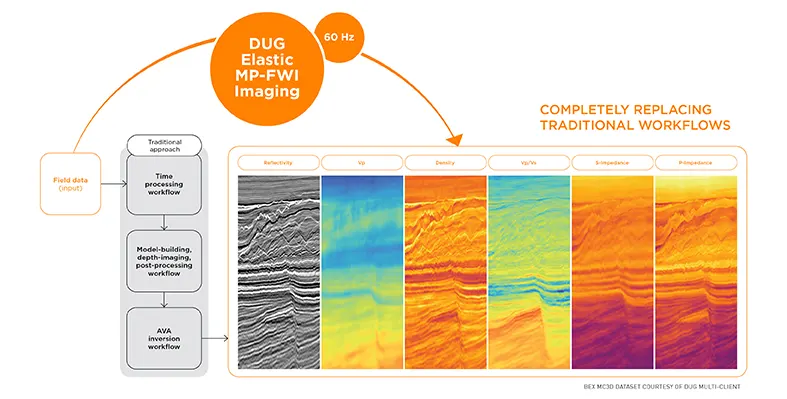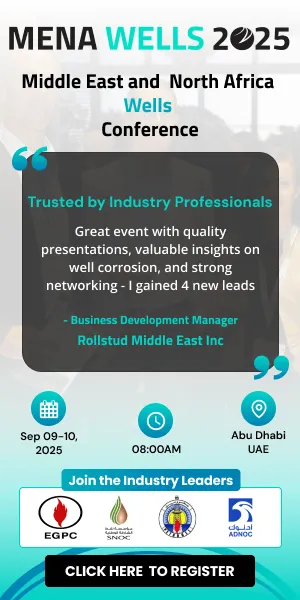
Hannes Liebe, regional president, APJMEA at IFS. (Image source: IFS)
Hannes Liebe, regional president, APJMEA at IFS, discusses Middle East business prospects and the evolution of industrial AI in advance of IFS Connect Middle East & Africa 2025, the company’s flagship customer and partner event
IFS, a global leader in industrial AI, sees strong prospects for growing its business in the Middle East, as Liebe explains.
“The Middle East right now is at a crossroads, following years of growth. Through AI, I believe we’re entering into a new era – the next industrial revolution. In the context of oil and gas, while the long term forecast for oil is generally downwards, at the same time natural gas and LNG are growing, along with new energies such as renewables and hydrogen.
“So the Middle East, with its appetite and ambition to lead the world in this new industrial era, plus the backdrop of what we see in oil and gas, makes this a very interesting opportunity for a solution provider like IFS, with our domain expertise and a similar level of ambition to lead our customers and industry into the future.”
He notes IFS’s focus on six asset-heavy industrial sectors – energy, utilities and resources; manufacturing; construction and engineering; aerospace and defence; services industries and telecommunications – and has always focused on execution.
“In asset-heavy industries, the software has to do the job. It’s not technology for technology’s sake. That is particularly the case in oil and gas, given the price constraints. It’s about uptime. It’s about the lifespan and serviceability of the assets. So it is a very important topic, and we have market-leading solutions to help customers optimise across their asset lifecycle.”
“It’s similar for the growing gas and LNG sector. Where do you invest the capital? How do you do the capital planning around this? How do you do maintenance for these assets? Predictive maintenance will become the rule, so you need a software platform that does this.”
Turning to the third area of new energies and hydrogen, he stresses that sustainability needs to be looked at from a business rather than a CSR perspective; there has to be a tangible ROI.
“If I invest in these emerging areas, how will they deliver the ROI that I need?
“All this is software related. It’s a big opportunity for IFS, and that’s why we are investing heavily in the Middle East.”
Approach to industrial AI
Discussing the company’s approach to industrial AI, he says “Industrial AI means contextual AI. This is all about AI in business context. We start from the business problem and the business process, and then look at the technological remit to resolve it. AI provides new capabilities that we didn’t have before. It is not about technological gimmicks, but to support the execution, to get the job done. In that way, it’s not about technology, it’s about business process.” It is this approach that has primed companies such as IFS to be very successful in this space where others have fallen, with a recent MIT study finding that 95% of generative AI pilots at companies are failing.
Discussing the challenges to AI adoption, Liebe highlights legacy systems and fragmented data, and the issue of trust. “If I were in oil and gas, I would be sceptical if it were just about the tools, the next tech. Can I really trust what that tool delivers to me? In an industrial context, if your prediction is wrong, it could have catastrophic consequences. The trust element only comes if it is executions and operations related; it cannot be just a tech tool. As with any technological innovation, the legacy will always drive us, but there’s also a mindset issue; the softer part of technological adoption will play a role. And I think we all have a journey to walk, on the supplier side as well as the customer side. We are in this together.
“What makes the difference in AI? The best way to summarise this is ‘dreams and details’. It needs ambition in the dream, and the rigorous focus on details to create the trust.”
Liebe highlights the company’s initiative with Nexus Black, whereby a world-class team of AI engineers are working with the customer to create AI-based solutions that solve real-world problems, in a scalable, reliable and trustworthy way.
A recent report from IFS highlighted that the evolution of industrial AI is creating a shift in business models, changing how businesses are run, automating maintenance, predicting disruptions, optimising supply chains, and facilitating intelligent decision-making across field service, asset management, and manufacturing. Elaborating on this, he comments, “Many companies are shifting their model to outcome-based revenue streams, meaning that predictive maintenance will become the rule. AI will fuel this, so we will see business model transformations and new revenue streams being enabled through the power of AI.”
Giving a specific example from the oil and gas sector, he highlights the company’s partnership with TotalEnergies, which will see all the energy company’s assets, from exploration and production to refineries and chemicals, moved into one platform through IFS Cloud, for streamlined asset management and servicing. When fully implemented, more than 13,500 users globally will be enabled to perform asset maintenance.
“It’s only by bringing all these assets together that you can truly optimise and make full use of AI,” he explains. “You can automate and create scale. This is an example of where IFS can truly help.”
IFS Connect Middle East & Africa
Turning to the IFS Connect event in Riyadh and how IFS will support the Saudi Vision 2030 strategy, he comments, “At its core, Saudi Vision 2030 is an example of ambition, urgency and sustainability. That is fully in line with how we think. We have that sense of urgency, but we want to show a commitment as well by building local talent, local partnerships, local presence. So we have moved our regional headquarters to Riyadh, and are partnering with local companies to strengthen our presence and enhance our capabilities. Moving our regional event for the Middle East and Africa to Riyadh is also testimony to this. The ambition in Saudi is palpable, and we want to be a part of it.”
With the theme “Powering Vision 2030: Industry-Centric Innovation for National Transformation”, IFS Connect will showcase how IFS’s industrial solutions & Industrial AI are enabling organisations in the region achieve tangible business outcomes and accelerate their contribution to national visions.
It will provide a valuable opportunity to share real stories with real customers, Liebe says, highlighting the company’s customer focus. It will also provide actionable value in the industrial context, with breakout sessions for each of its industrial verticals, where customers can share their experiences with their peers.
“Thirdly, it’s about inspiration, coming back to the dreams and details,” he concludes. “We all have to dream together, no-one has it all. And there is no better way of doing this than in an industry event context.”













